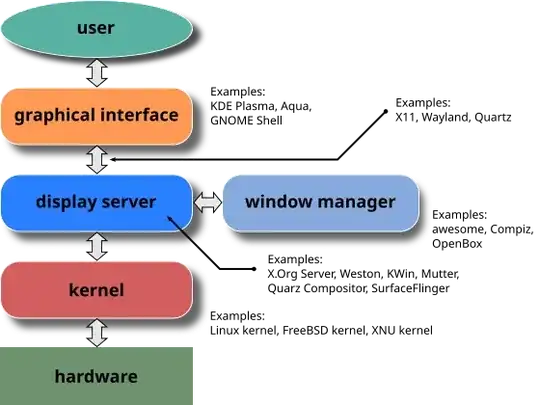Most likely, you'll need to pick a language and a graphics library or GUI toolkit.
The way that the GUI is rendered on a Linux system is relatively simple, once you understand what each part does. We don't need a really in-depth knowledge of each part, but I'll give you a brief summary, with the aid of a nice illustration I found:

Illustration of the graphical user interface stack by Shmuel Csaba Otto Traian; CC BY-SA 3.0.
The display server (in your case X.Org) handles the primitive drawing and events such as mouse/keyboard input. Generally, you wouldn't bother writing your application to talk at this level, because it's a lot of work. Interesting trvia: a lot of newer distributions are considering using Wayland instead of X, because X is getting old and complicated... Not much fun to work with!
On top of your display server is your desktop environment (which is LXDE; PIXEL is just a modification of it). The desktop environment also has a window manager, which handles drawing the chrome around your windows (shockingly enough!).
Applications such as yours generally use a GUI toolkit. This contains some basic widgets such as buttons, text boxes and so forth which are useful in many situations. The famous two are GTK+ and Qt. This is the important bit for you.
Most languages have bindings to at least one of the above toolkits. C# (through Mono) has bindings to both on Linux. Qt has excellent bindings for C++.
Each toolkit has a slightly different way of doing things, but nearly all support full screen windows with basic graphics primitives, usually with relatively little code. Rather conveniently, there's almost always a Stack Overflow question asking how to perform basic tasks with GUI toolkits etc. These are usually pretty easy to learn from, especially with your level of experience.
In your situation, since performance isn't particularly important, I'd look for a toolkit that's easy to program with in a language that you're comfortable with.
There are a couple of ideas that come to mind:
Run a fullscreen browser and use HTML/CSS/JS to create your information display. I personally find HTML much easier to create UIs with than many of the other toolkits, and polygons with gradients would be trivially easy with CSS. However, this would make reading files on your Pi more difficult, so if that's a requirement, this isn't the route for you. However, with JavaScript, you can make requests to other websites.
It would then simply be a case of opening your browser in fullscreen mode (e.g. opening Chromium in kiosk mode)
Use a graphical toolkit like Gtk and Python. Here is a simple example of using Cairo with Gtk to draw shapes. It's a little more involved than HTML/CSS, but with Python, you can also read local files etc.
Both Python and HTML support hiding the mouse cursor (CSS; Python GTK) and playing sounds (JS; Python).
The language you choose will depend on what you're familiar with, and how much time you want to invest. My suggestion is to choose the simplest solution to develop. Don't worry about stripping down to the bare minimum, and the fastest language, unless you've got a particular reason to—the phrase YAGNI comes to mind.
As far as I know, there's no "recommended toolkit" or anything of that sort. As with most things regarding programming, there are many ways to achieve the same goal, and it's all about the tradeoffs you want to make.
To answer your question regarding Android: the Pi Zero is probably a little too weak (see this reddit post) to run Android capably, so it's probably not worth pursuing.
